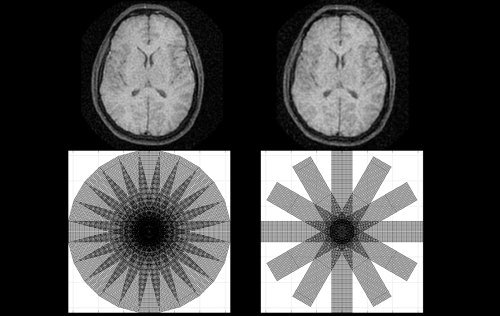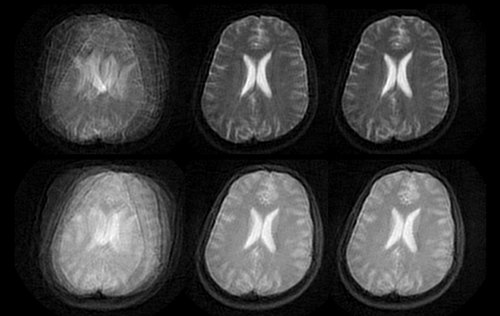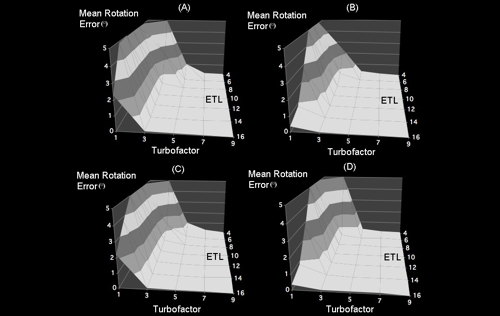Contributions
- We have developed under-sampled acquisition schemes reducing imaging time in PROPELLER by as much as 50% with minimal artifacts. These schemes are now routinely used with PROPELLER on MRI scanners.
- We have developed acquisition strategies that optimize motion correction in PROPELLER and Turboprop MRI.
- We have developed an iterative image reconstruction approach for PROPELLER imaging that produces higher image quality than traditional gridding.
We have developed optimal MRI data acquisition strategies, techniques for enhancing image quality and reducing image artifacts, and have applied these tools in various clinical problems. For example, we were among the early developers of PROPELLER MRI (Periodically Rotated Overlapping ParallEL Lines with Enhanced Reconstruction) techniques. PROPELLER provides images with significantly fewer B0-related artifacts than echo-planar imaging (EPI), as well as reduced sensitivity to motion compared to conventional multiple-shot fast spin-echo (FSE). However, the minimum imaging time in PROPELLER is markedly longer than in EPI, and 50% longer than in conventional multiple-shot FSE.
Selected Related Publications
- Arfanakis K, Tamhane AA, Pipe JG, Anastasio MA. k-space undersampling in PROPELLER imaging. Magn Reson Med 2005;53:675-683.
- Tamhane AA, Arfanakis K. Motion correction in periodically-rotated overlapping parallel lines with enhanced reconstruction (PROPELLER) and turboprop MRI. Magn Reson Med 2009;62:174-182.
- Tamhane AA, Anastasio MA, Gui M, Arfanakis K. Iterative image reconstruction for PROPELLER-MRI using the nonuniform fast fourier transform. J Magn Reson Imaging 2010;32:211-217.





